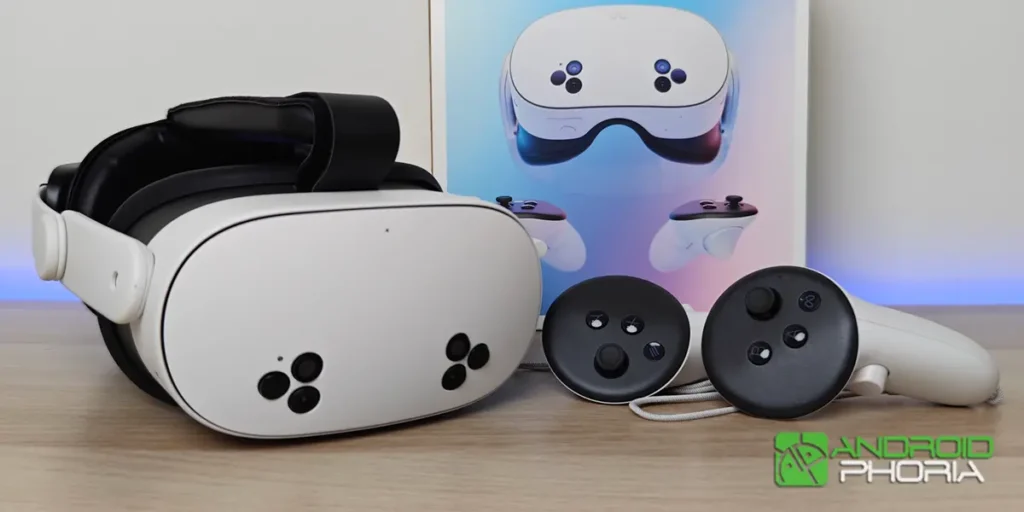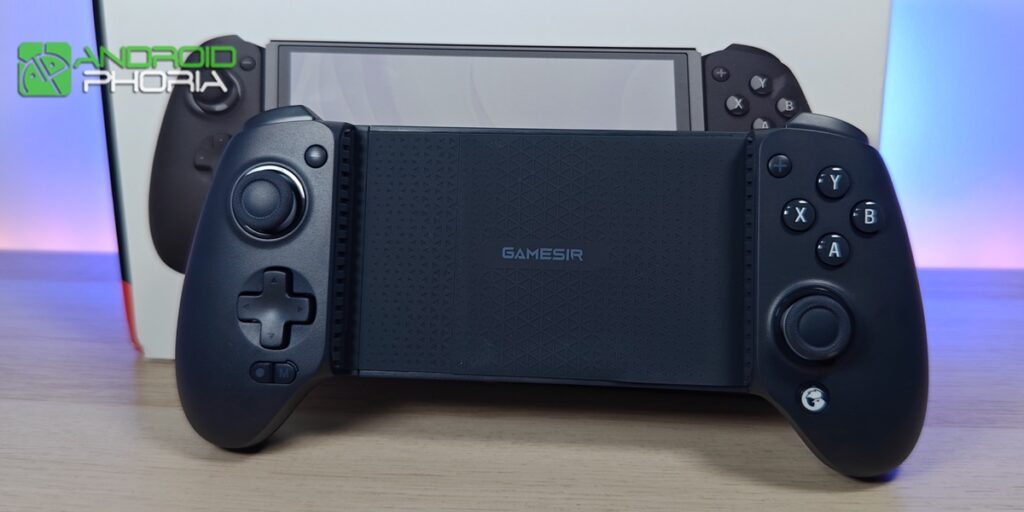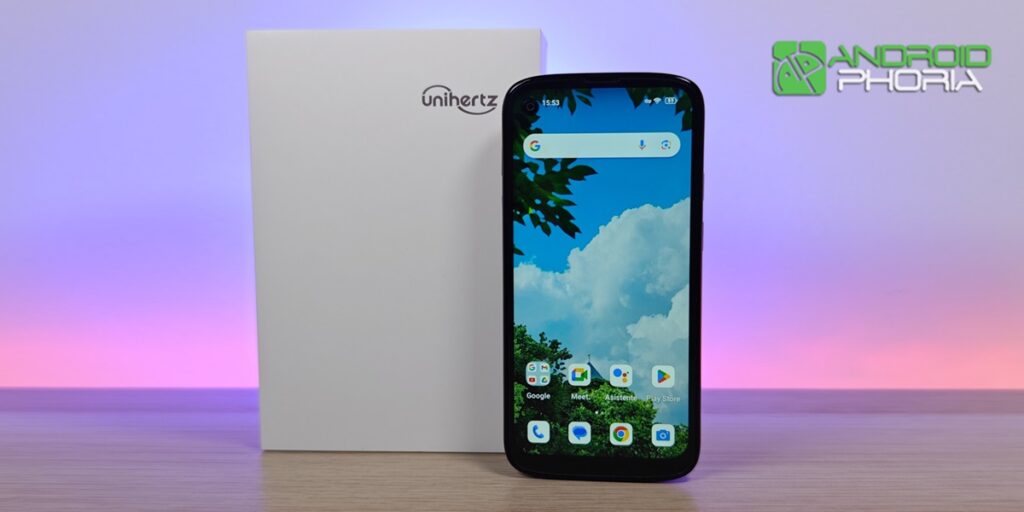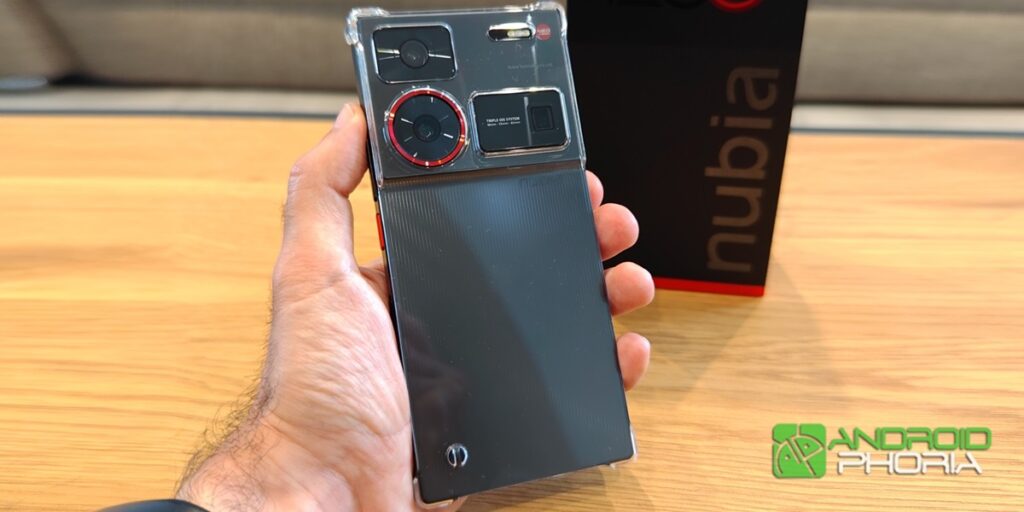
Meta has revolutionized the mixed reality glasses market with the launch of the Quest 3S. And, although they arrived as an economical version of the Quest 3, they do not have as many cuts as we thought. In fact, They offer the same power as their older sister. So, in practice, they are equally functional and suitable for all types of virtual or augmented reality tasks and games.
With a base price of €329.99, the Quest 3S are presented as the definitive glasses to enter the world of mixed reality without investing a lot of money. We’ve been testing them thoroughly to see how good they really are and how they compare to the Quest 3 and Quest 2.
Meta Quest 3S: the best quality-price option to enjoy virtual and augmented reality

The goal of the Meta Quest 3S is to give you a Premium VR and AR experience at an affordable price. To do this, they maintain the Snapdragon XR2 Gen 2 processor of the Quest 3 (which is the most powerful chip for glasses currently) and some of its features, which you can check below.
Meta Quest 3S technical sheet
|
Characteristics |
3S meta search |
| Dimensions and weight | 191.5 x 102 x 142.5 mm (without strap). 514 grams (with strap). |
| Screen | 1832 x 1920 LCD display for each eye with 100 nits brightness, 773 PPI, 20 PPD and refresh rate up to 120 Hz. |
| Field of view | 96° horizontally and 90° vertically. |
| Optics | Fresnel lenses. |
| Processor | Qualcomm Snapdragon XR2 Generation 2 8 Kyro cores with Adreno 740 graphics. |
| RAM | 8GB. |
| Storage | 128GB or 256GB. |
| Cameras | 6x Camera Sensors (two for passtrough and four for positioning) 2x Infrared emitters. |
| Battery | 4324mAh for an average autonomy of 2.5 hours. |
| Controls | 2x Meta Quest Touch Plus with haptic vibration. Powered by AA batteries. |
| Operating system | Horizon OS 69. |
Good design, good ergonomics and many cameras
The Meta Quest 3S have a design that is halfway between the Quest 3 and the Quest 2. They are 40% thinner than the Quest 2but they are still 20% thicker than the Quest 3 due to the use of different lenses (more on that later). And although they weigh practically the same, the Quest 3S are a little more uncomfortable because their weight is further from the face.
Even so, the Quest 3S fit very well on my face and I have been able to use them for more than an hour continuously without them bothering me too much. Once you get used to the weight, they are quite comfortable. On the other hand, I must say that its build quality is what I expected from a premium product. Its plastic body is strong and solid, and everything on it snaps tightly into place.
The glasses have a total of six camera sensors and two infrared emitters. On the front side, They have two passthrough cameras, two positioning cameras and two infrared emitters.. And on the sides it has a couple more positioning cameras. What are each one for? Let me explain it to you well:
- Pass through: These cameras are what allow you to see the real world in front of you through the glasses. They are used in mixed reality apps that combine the real world with virtual objects.
- Positioning: They are responsible for measuring your position at all times to detect the movement of your hands, head and controls, and reflect it in real time in games or other applications.
- Infrared: These emitters are what allow you to see in totally dark places through the glasses. They also track your hands in the dark, making it possible to play at night or with the lights off.
It should be noted that The Quest 3S are the only VR glasses on the market with infrared emitters to illuminate (invisible to the human eye) dark rooms.
The small dot you see near the front cameras is an LED that indicates whether they are on or off. Right there, and surrounding the entire front part, is a cooling slit that takes air from below and expels it aboveto to dissipate all the heat generated by the processor in the glasses.
As for buttons, it only has three: the power button on the side and the volume and action buttons on the bottom. Saying action button is the first time it has been incorporated into Meta glasses and serves to quickly activate passthrough mode to see the real world from the glasses. It also has a USB-C port on the side for charging or connecting to a PC.
Some details that could be improved
The Meta Quest 3S box, in addition to including the glasses, It comes with a pre-installed facial, a separator for the glasses, two Touch Plus controls with their respective AA batteries, two wrist straps, a power adapter and a USB-C charging cable. And this is where the things that leave the most to be desired about the Quest 3S are.
For a start, the elastic band to hold the glasses is useless; It is uncomfortable and does not help distribute weightTherefore, wearing glasses for more than 30 minutes becomes annoying. I’ve had to buy a third-party one that fits my head better, distributes the weight well, and feels much more comfortable in general.
Maybe To use the glasses lying in bed, the included elastic band comes in handybut for general use it is advisable to buy one from higher quality third parties, which usually also offer extra battery.
Another accessory I had to buy for her was a silicone facial. The one it comes with is made of fabric and absorbs a lot of sweat, so it tends to be unhygienic. The silicone one, on the other hand, does not retain sweat and is much easier to clean.. So it’s practically another mandatory purchase. Of course, I must clarify that both facials fit the face quite well and are comfortable.
By the way, if you use prescription glasses, there is no problem because Even the largest frames fit perfectly inside the Quest 3S. And if your glasses are too close to the lenses and you are afraid of scratching them, you can use the included glasses separator to increase the distance between your eyes and the lenses.
Major cutouts in lenses and screen
To reduce costs, The Meta Quest 3S uses a fresnel lens system (the same as the Quest 2) instead of the thin pancake lens system of the Quest 3 that are the best on the market right now. This causes them to have a larger size, as well as a smaller field of view (96° horizontally x 90° vertically) and a lower resolution (1832 x 1920 pixels per eye).
Compared to pancake lenses, other problems with fresnel lenses are their high glare (rays of light that appear in high-contrast scenes), their lack of sharpness in the periphery, and their interpupillary adjustment (IPD) of only three fixed options. The latter can result in a slightly blurry VR experience if your interpupillary distance doesn’t exactly match one of the available options.
None of the aforementioned problems are serious or ruin the experience of using these glasses, since They have no chromatic aberration, distortions or any other serious flaws. In fact, if the Quest 3S is your first VR headset or you’ve never tried the Quest 3, you most likely won’t even notice these shortcomings that are inherent to fresnel lenses.
Regarding its internal screen, instead of using two (one for each lens), the Quest 3S comes with one Single LCD screen with good pixel density (773 PPI) and a refresh rate that can vary between 72, 90 and 120 Hz. It looks incredibly good, even though it is below the dual screen of the Quest 3 in terms of quality. Of course, there are no differences with the Quest 2 screen.
Brutal and immersive 3D sound, but without a 3.5 mm jack
Although it is not necessary, you will probably also want to buy a USB-C to 3.5mm jack adapter, since lack cable headphone jack. This is a problem, because if you use them with Bluetooth headphones you will notice a lot of latency, while the integrated speakers in their fins do not isolate you from the environment (you will be able to hear others and others will be able to hear what you are doing with the glasses if you have the volume up).
In particular, I have ended up using them most of the time with Fin speakers that sound brutal and provide an immersive audio experience and three-dimensional that I don’t think you can achieve with headphones. So, although the 3.5 mm jack would have been a good extra for specific occasions, in the end I did not miss it.
Brutal power for its price
The hardware of the Meta Quest 3S is the same as that of the Quest 3. It has the most powerful processor at the moment for VR glasses, the Snapdragon XR2 Gen2128 GB or 256 GB storage, and 8 GB RAM. Therefore, you can expect the same performance with the Quest 3S as with the Quest 3. And this is a huge advantage, since there will be no game or app for the Quest 3 that will not work with the Quest 3S.
It should be noted that the integrated graphics of the Quest 3S It is twice as powerful as the Quest 2. So, if you want very powerful VR glasses for gaming, the Quest 3S are the best you can find without a doubt in terms of quality and price.
By the way, no matter where you buy them, the Meta Quest 3S comes with the game Batman: Arkham Shadow free and 3-month Meta Quest+ trial (the service that gives you access to dozens of games for glasses).
Likewise, it is important to highlight that the Quest 3S can be connected to a PC with a USB cable (with Meta Quest Link) or via WiFi (with Air Link). I was surprised at how well the wireless connection works. Taking advantage of the glasses’ WiFi 6E, I was able to play Steam games fluently without connecting any cables to my PC. The transmission did not drop at any time and I was able to play with the maximum graphic quality that my PC allows without problems.
Ergonomic and intuitive controls
The Meta Quest 3S uses the same Touch Plus controllers as Meta’s Quest 3 and Quest Pro models. They are comfortable to hold and easy to use. When you’re playing, the controllers become an extension of your hand, making them easy to use and intuitive.
They have a haptic vibration that is noticeable enough to make you notice, but not bothersome. It is very comfortable to navigate through the menus and move the screens with themalthough you can also control everything just using your hands.
The movement tracking works perfectly well, the buttons respond quickly and, in general, These controls have not given me any problems. Something that I found curious is that they do not use rechargeable batteries, but rather AA batteries (one in each control). And I can understand why, since they last up to 1 month of daily use.
How long does the Meta Quest 3S battery last?
Regarding batteries, The Meta Quest 3S incorporates a 4324 mAh for a duration of 2.5 hours on average. It’s not much, but keep in mind that you most likely won’t want to wear the glasses for several hours at a time, as this technology tends to cause dizziness and nausea (motion sickness).
With some demanding games running directly on the glasses, autonomy can be reduced to only 1.5 hours. Therefore, it is advisable to buy a separate headband with a built-in battery to give it extra autonomy.
What can you do with the Meta Quest 3S?
In addition to games and virtual reality experiences, The Meta Quest 3S uses the Horizon OS operating system that has a lot of apps and interesting features. Some of the most notable are:
- Mixed reality: The glasses can scan your entire room and recognize different surfaces to replace them with virtual objects or shapes that completely change the space in a realistic way.
- Browse the Internet: It has an integrated browser that will allow you to search for things on the Internet, visit your favorite websites, open social networks, play multimedia content, etc.
- Watch movies and series– Compatible with many streaming apps, including Netflix, Prime Video, and YouTube.
- Look at social networks: As expected coming from a Meta product, the Quest 3S has a Facebook and Instagram application so you can view and manage your social networks from it.
- Games: You can play any game you want, either via streaming with Air Link, or through the cloud with services like Xbox Game Pass.
- world horizon: is the official social network of Meta Quest that allows you to visit virtual worlds and interact with other people in mixed reality.
Is the Meta Quest 3S worth buying?
Meta has done with the Quest 3S a more affordable version of the Quest 3, but just as powerful. Its lenses and screen are the same as the Quest 2, but it has the processor and controls of the Quest 3. Thus, Meta has made the Quest 3S affordable without sacrificing performance.
With a price of €329.99 (the 128 GB model), offer a premium virtual and augmented reality experience suitable for tight budgets. They have some details that could be improved that you will surely want to solve by buying third-party accessories, but you can’t ask for more.
It’s crazy how good the Quest 3S are considering their price. There are no other glasses on the market better than these that cost less than €500and that’s saying a lot. If you haven’t tried virtual reality yet, this is the option that is most worth the money.
|
THE BEST |
WORST |
|---|---|
|
|
Of course, if you want the best mixed reality experience, it is even more worth going for the Meta Quest 3, which are superior in ergonomics, lenses and screen. Plus, they don’t cost much more (on sale you can get them for €479.99). In fact, if you have the Meta Quest 2, if I were you I wouldn’t take the intermediate step and jump straight to the Meta Quest 3.





![Hands-On With Every Official Pixel 9 Series Case: Is It Worth The Price? [Video]](https://tecniserviciospro.com/wp-content/uploads/2024/08/Hands-on-with-every-official-Pixel-9-series-case-Is-it-1024x536.jpg)